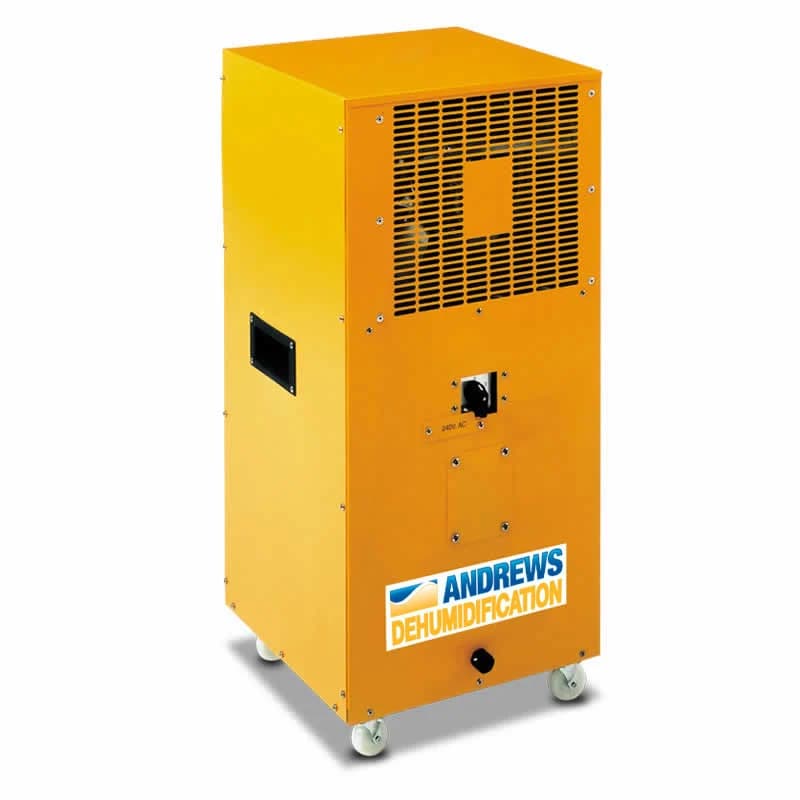Building drying is a crucial process in the aftermath of water damage, whether from flooding, leaks, or other sources of moisture. To effectively restore a building to its original state, it is essential to understand the science behind drying, particularly the concept of relative humidity. This article explores the role of relative humidity in the drying process and highlights the importance of using building dryers to achieve optimal results.
What is Relative Humidity?
Relative humidity (RH) refers to the amount of moisture present in the air compared to the maximum amount of moisture that the air can hold at a specific temperature. It is expressed as a percentage. For example, an RH of 50% means the air is holding half of the moisture it can potentially contain at that temperature.
Understanding relative humidity is vital for effective building drying. When a building suffers from excess moisture, high levels of RH significantly slow down the drying process. Ideally, for efficient drying, the RH should be below 60%. When the RH is above this threshold, the air becomes saturated, making it challenging for moisture to evaporate from surfaces such as walls, floors, and furniture.
The Importance of Controlling Humidity
Controlling humidity is critical in the drying process. High RH not only prolongs drying time but also increases the risk of mold growth and structural damage. Mold thrives in damp environments, and if moisture is not adequately addressed, it can lead to health issues and further damage to the building.
By understanding how to manage relative humidity, businesses can create a more effective drying strategy. This is where building dryers come into play. These devices are designed to lower humidity levels in affected areas, facilitating quicker moisture evaporation and promoting a healthier environment.
How Dryers Work
Building dryers operate on a simple principle: they remove moisture from the air. These devices are equipped with powerful fans and dehumidification technology that work together to create a controlled drying environment. Here’s how the process generally works:
- Moist Air Intake: Building dryers draw in moist air from the surrounding environment. This air often contains high levels of humidity due to water damage.
- Dehumidification: Once the moist air is drawn in, it passes over cooling coils. As the air cools, the moisture condenses into water droplets, effectively removing humidity from the air.
- Dry Air Release: The now-dry air is then heated slightly and released back into the environment. This process not only reduces the moisture level in the air but also encourages evaporation from wet surfaces.
- Continuous Cycle: This cycle continues until the desired humidity level is achieved, ensuring that all affected areas are adequately dried.
Selecting the Right Equipment
Choosing the appropriate building dryer is essential for effective moisture removal. Various factors must be considered, including:
- Size of the Space: Larger areas may require multiple units or more powerful dryers to ensure uniform drying.
- Extent of Water Damage: The severity of the water damage will dictate the type and number of dryers needed. Heavily affected areas may need industrial-grade equipment.
- Existing Humidity Levels: Monitoring the initial humidity levels in the environment will help determine the best strategy for drying.
Andrews Sykes provides a range of building dryers tailored to meet specific drying requirements. Their expertise in the field ensures that businesses can find the right solution for their unique situations.
Additional Benefits of Using Building Dryers
Utilising building dryers offers several advantages beyond simply reducing moisture levels. These include:
- Faster Drying Times: By lowering humidity levels effectively, building dryers can significantly reduce the time it takes to dry out a space. This is crucial for minimising disruption to business operations.
- Preventing Mould Growth: Quick drying reduces the risk of mould development, which can pose health risks and lead to further damage if left untreated.
- Improving Air Quality: By managing humidity levels, building dryers contribute to
better indoor air quality, making the environment safer for occupants.
Final Thought
Understanding relative humidity is fundamental to effective building drying. By utilising building dryers, businesses can significantly improve the drying process, ensuring that moisture is removed efficiently and effectively. With the right equipment and knowledge, companies can safeguard their properties against the detrimental effects of excess moisture. Andrews Sykes offers the expertise and equipment necessary to help businesses navigate their drying needs successfully. Companies should explore how these solutions can enhance their operations and contribute to a healthier environment.





Comments